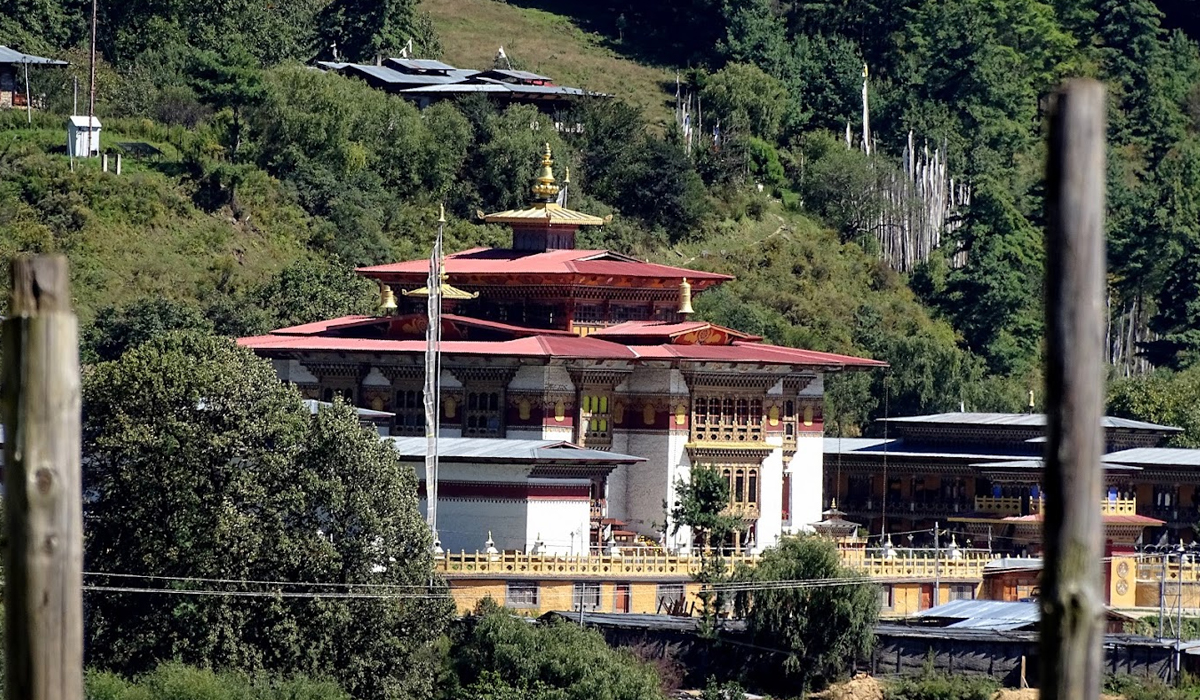


History of Kurjey Lhakhang
Kurjey Lhakhang, located in the Bumthang Valley of Bhutan, is one of the most sacred monasteries in the country. The name Kurjey translates to “Body Imprint,” referring to the miraculous imprint of Guru Rinpoche’s body that is enshrined in the temple. This site holds immense religious and historical significance as a cornerstone of Bhutanese Buddhism.
Foundation and Legend
The history of Kurjey Lhakhang is deeply intertwined with Guru Padmasambhava (Guru Rinpoche), the great Indian saint credited with bringing Buddhism to Bhutan in the 8th century. Legend has it that Guru Rinpoche arrived in Bumthang to subdue a malevolent local deity named Shelging Karpo, who had caused turmoil by afflicting a local king, Sindhu Raja, with illness.
Guru Rinpoche meditated in a cave at the site, performing powerful rituals to defeat the deity and restore peace. During his meditation, his body left an imprint on the rock inside the cave, marking it as a sacred site. Following the successful subjugation of Shelging Karpo, Guru Rinpoche blessed the area, and the king and his people embraced Buddhism.
Construction and Expansion
The first temple of Kurjey Lhakhang was constructed in 1652 by Trongsa Penlop (governor) Chogyal Minjur Tenpa under the patronage of the Drukpa Kagyu lineage. Over the centuries, two additional temples were built, each contributing to the complex’s grandeur:
- The Guru Lhakhang (Old Temple): The oldest temple, which houses the sacred cave with Guru Rinpoche’s body imprint.
- The Sampa Lhundrup Temple: Built in the 1900s, it is dedicated to Guru Rinpoche’s eight manifestations.
- The New Temple: Constructed in the 1990s by Her Majesty the Royal Grandmother Kesang Choden Wangchuck.
Architectural and Religious Importance
Kurjey Lhakhang showcases traditional Bhutanese architectural excellence, with intricate woodwork, murals, and statues depicting the life and teachings of Guru Rinpoche. The monastery is surrounded by a sacred cypress tree believed to have sprouted from Guru Rinpoche’s walking stick.
The site also serves as a cremation ground for Bhutan’s royal family, adding to its cultural and historical importance.
Religious Significance
Kurjey Lhakhang is a major pilgrimage site for Bhutanese and international visitors. The annual Kurjey Tsechu festival, held here, is a vibrant celebration that features mask dances and rituals honoring Guru Rinpoche. The festival reinforces the temple’s status as a vital spiritual hub.
Legacy
Kurjey Lhakhang stands as a symbol of Bhutan’s deep-rooted Buddhist heritage and the transformative influence of Guru Rinpoche. It remains a place of profound reverence, meditation, and cultural continuity, embodying the spiritual essence of the nation.
Bumthang - Places to visit

It was established in 2007 by Swiss brewer Fritz Maurer, who had a vision of bringing high-quality beer to Bhutan.

It is known for its ancient frescoes and murals that depict the life and teachings of Buddha, as well as the famous Jataka tales.

The temple houses several important relics, including the sacred chain mall of Terton Pema Lingpa.

It is also known for its collection of ancient Buddhist scriptures and manuscripts, many of which are written on handmade paper and are several centuries old.

Kurjey Lhakhang is a sacred monastery in Bumthang, known for its spiritual significance and beautiful architecture, attracting pilgrims annually.

Jambey Lhakhang, one of Bhutan’s oldest monasteries, is renowned for its historical significance and vibrant annual Tshechu festival.

Mebar Tsho, the “Burning Lake,” is a sacred site in Bumthang, known for its spiritual significance and stunning scenery.

It is famous for its textiles, particularly the locally woven woolen fabrics called “Ura Shing” and “Ura Rachu.”

It has a large prayer wheel, a collection of ancient Buddhist scriptures, and a sacred prayer flagpole.

It is one of the six main Nyingma monasteries in Bhutan and is considered to be one of the most important monasteries.

The monastery has a unique architectural style with intricate wood carvings and paintings that depict life and teachings.
